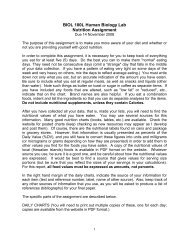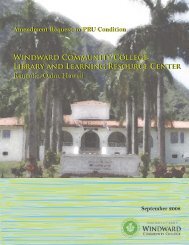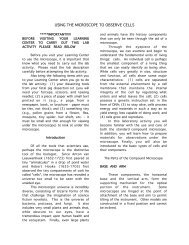chapter 6. other concepts relating to sex - Windward Community ...
chapter 6. other concepts relating to sex - Windward Community ...
chapter 6. other concepts relating to sex - Windward Community ...
You also want an ePaper? Increase the reach of your titles
YUMPU automatically turns print PDFs into web optimized ePapers that Google loves.
who chooses <strong>to</strong> leave. Their perspective seems <strong>to</strong> derive from the Isan view rather than the<br />
Central Thai one on this subject.<br />
Religious-oriented s<strong>to</strong>ries come mostly from India, though because they have been<br />
passed down, have taken on some regional variation. Tossa (1992) argues that women are<br />
virtually absent from Buddhist texts, including the Indian Jataka tales, 29 and that the focus of<br />
these is the adventures of men (p. 12-13). Tossa believes the female characters are not intended <strong>to</strong><br />
be models for humans. But regardless of the intention of the s<strong>to</strong>ries, some Thais hold them up in<br />
this way. The women who do appear are virtuous and not quite human. Collins (1982; 1998) and<br />
Gombrich (1977, 1980), have written somewhat extensively about the Vessantara's (the final<br />
human incarnation of the Buddha) wife as a role model for women. The Vessantara Jataka is <strong>to</strong>ld<br />
every year in virtually every temple. The Jataka tales are well known among SWU students. The<br />
extent <strong>to</strong> which the characters, whether real or fictional, serve as social role models is debatable.<br />
They are, however, unders<strong>to</strong>od by students <strong>to</strong> be moral role models, whose lives provide<br />
examples of the consequences of moral (or immoral) qualities and action in specific<br />
circumstances.<br />
Tossa also identifies what she calls pseudo-Buddhist tales, which "cannot be found in the<br />
Sanskrit Mhavastu or the Indian Jataka tales, but the s<strong>to</strong>ry-tellers claim that these are also<br />
Buddhist Jataka tales" (p. 13). One of these pseudo-Buddhist s<strong>to</strong>ries familiar <strong>to</strong> students is<br />
Kalakèet. Kalakèet is a prince and the s<strong>to</strong>ry involves gods, angels, magic, kings, queens, love lost,<br />
love found, plural wives, adventures, several compromises, and a happy ending.<br />
An<strong>other</strong> popular Lao tale is The Orphan and the Little Ghost (Kamphráaphĭinø´øy). It is<br />
the s<strong>to</strong>ry of a poor orphan boy of great merit. He is disliked by the villagers, but finds friends in<br />
29<br />
Jataka tales were written in the Pali language about two thousand years ago and have been passed down<br />
generation <strong>to</strong> generation. They are primarily s<strong>to</strong>ries about the past lives of Buddha, which offer wisdom<br />
and serve as guides <strong>to</strong> moral behavior. There are over 500 Jataka tales.<br />
159












